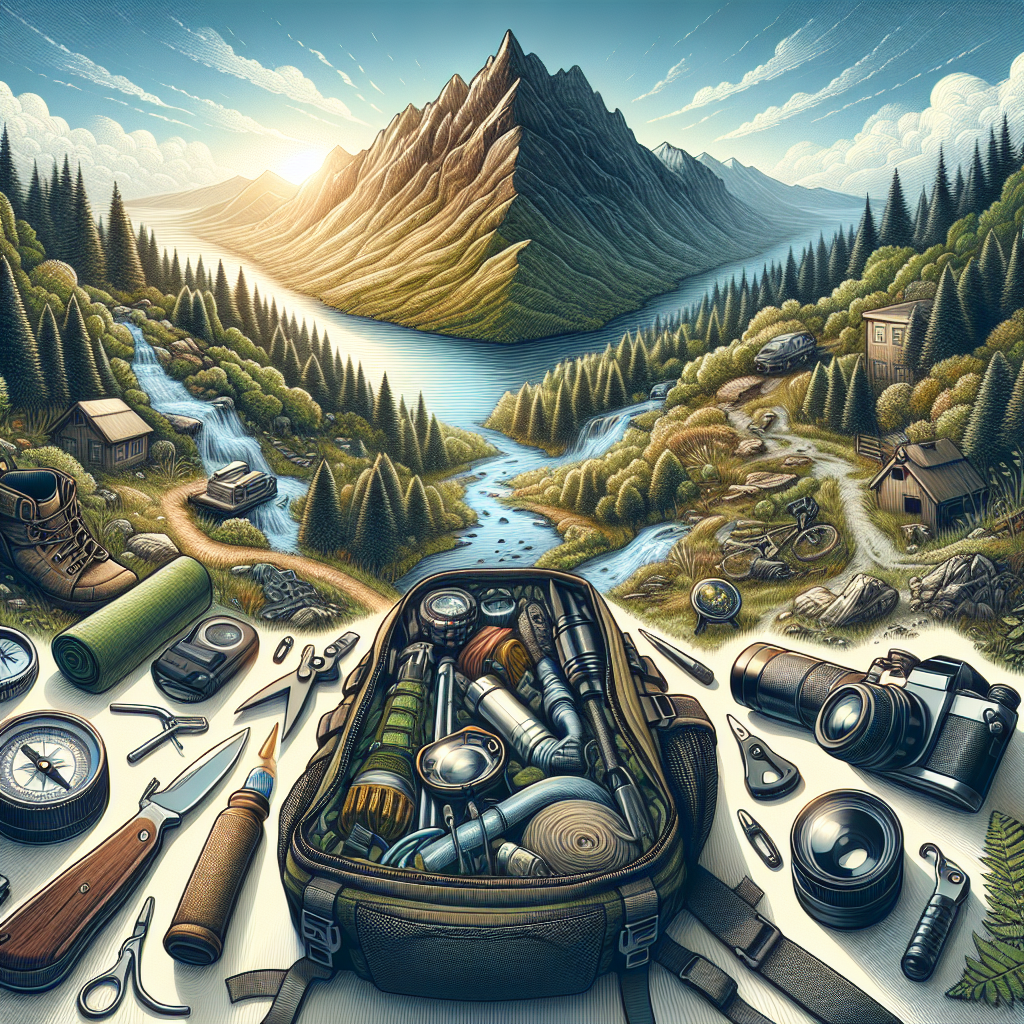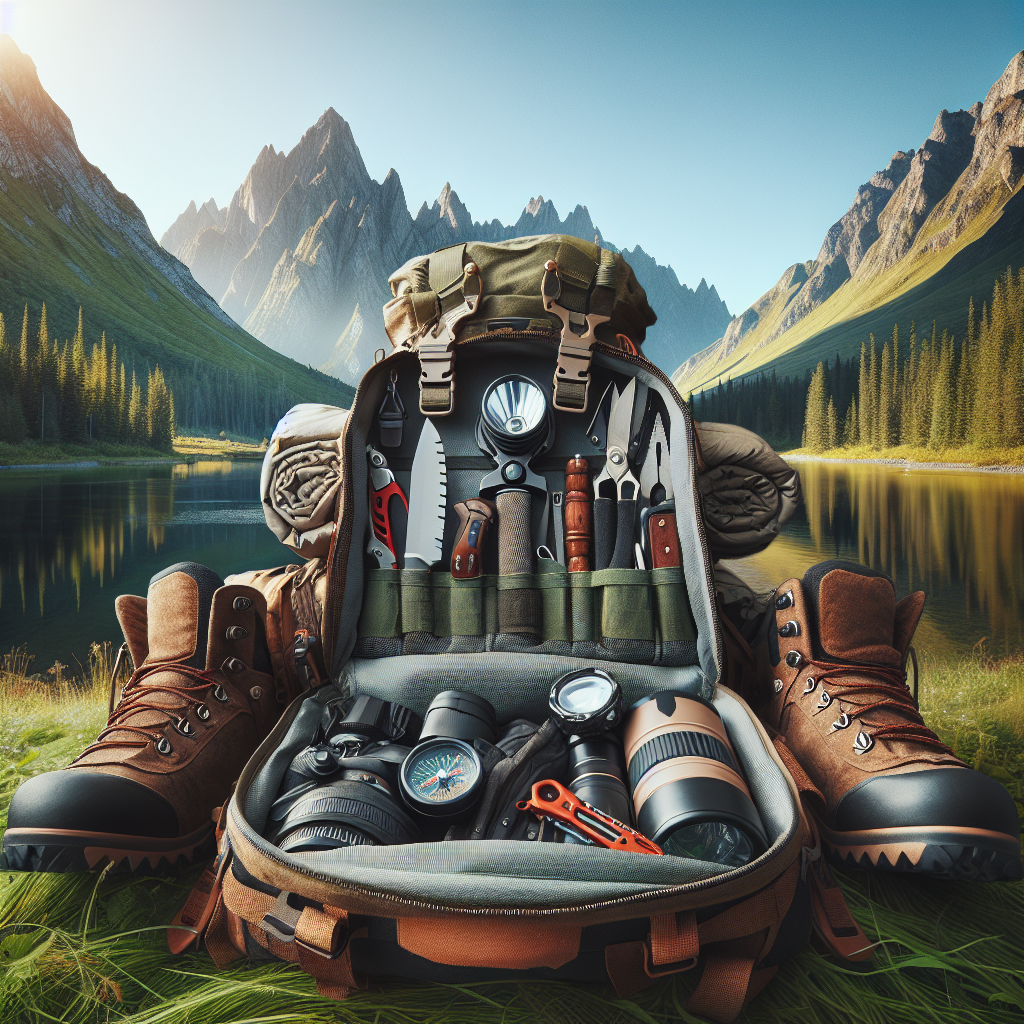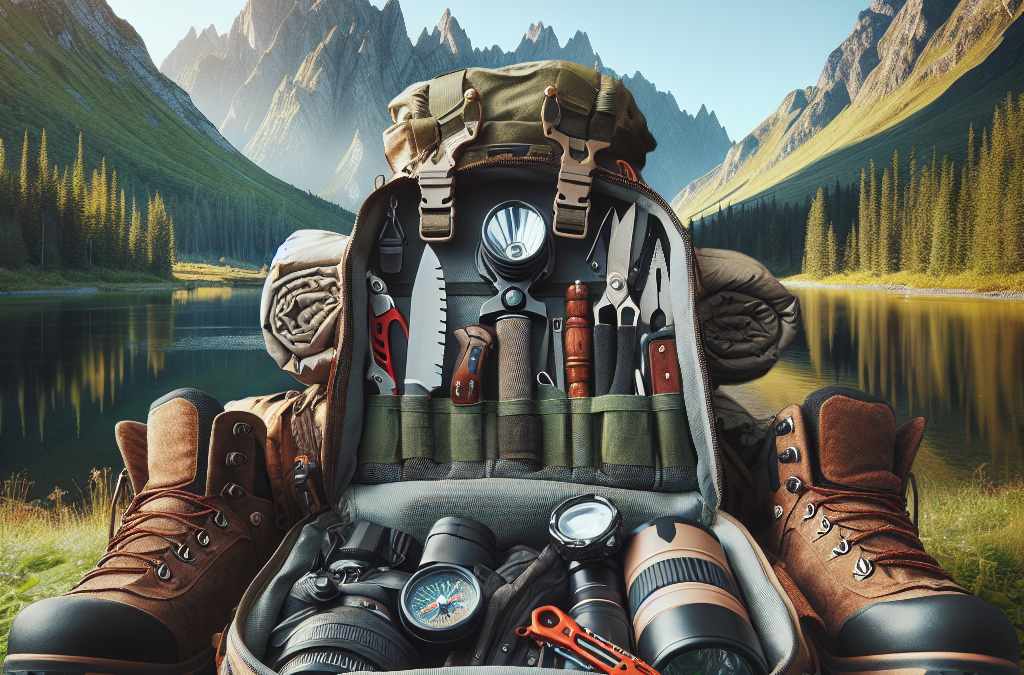You might be an adrenaline junkie, an avid mountaineer, or simply someone who values the beauty of nature. Regardless of which category you fall into, this ultimate guide to building an outdoor adventure kit is just for you! Easily preparing for your next great expedition has just gotten easier. This comprehensive guide provides handy tips and practical advice for assembling the perfect package. Packed with clever insights and essential tools, it’s designed to help you brave any outdoor adventure. Gear up and let’s get started on curating your perfect outdoor adventure kit!
Understanding the relevance of an Outdoor Adventure Kit
Embarking on an outdoor adventure is always a thrilling experience. But remember, whether you’re venturing deep into the wilderness or just testing your mettle against Mother Nature, your safety and well-being are a priority. This is why an outdoor adventure kit is your best companion to ensure you are equipped to face any challenge or circumstance that may come your way.
The need for preparedness
Your adventure kit is like a portable lifeline, containing everything you might need to survive and thrive in the great outdoors. The truth is, preparation is key when heading outside your comfort zone, and your kit is like a compact resource center, ready to equip you with whatever you need at a moment’s notice.
Situation assessment & kit customization
Your adventure kit isn’t a cookie-cutter solution; no two kits ought to be exactly alike, because your needs may vary based on where you’re going, what you’re doing, and countless other factors. Be sure to evaluate what potential challenges you might face during your adventure, then customize your kit accordingly.
General components of an outdoor adventure kit
Most outdoor adventure kits will include the basics—water, food, shelter, first aid materials and communication devices. But again, your kit should be as unique as you, so be certain to consider your specific needs when packing.
Planning your Outdoor Adventure Kit
Creating an outdoor adventure kit starts with careful planning. This doesn’t mean only throwing in things you think are important; it’s about identifying the activities you plan to undertake and choosing necessities that align with those activities.
Identifying your adventure activities
Are you planning a trek, canoeing down a river, or pitching a tent in the wilderness? Depending on your activity, the contents of your kit may vary. The gear for a hiking trip will differ from that needed for a fishing expedition, so plan accordingly.
Researching geographical and weather requirements
Studying the geographical traits of your adventure location and the weather conditions is paramount in planning your kit. If you’re heading into snowy mountains, you’ll need cold-weather gear. Alternatively, if you’re in a sun-drenched desert, sun protection is a must.
List what items you already have
Before you rush out to buy items for your kit, first take stock of what you already have. By identifying the items you own, you can save money and time by not purchasing unnecessary duplicates.
Determine your budget for the kit
The cost of your adventure kit can add up quickly. It’s wise to set a budget for your kit and stick to it, prioritizing your needs above your wants.

Breaking Down Your Basic Survival Needs
When heading out into nature, focusing on your basic survival needs—water, food, shelter, and clothing—is key to a successful adventure.
Importance of water and hydration tools
The human body can survive for weeks without food, but only a few days without water. Include a sturdy water bottle in your kit, and consider a water filter or purification tablets in case you need to source water on your journey.
Knowing your nutrition supplies
Nutrient-packed, non-perishable food items are essential in your adventure kit. It’s important to pack enough food to sustain your energy throughout your adventure.
Shelter requirements
Regardless of where your adventure takes you, a lightweight, durable tent or shelter should always be part of your kit. This will protect you from the elements and provide a safe and secure place to rest.
Fire-starting tools
Fire can be a source of warmth, a way to cook your food, and a signal for help. Be sure to include fire-starting tools like matches, a lighter, or a flint striker in your kit.
Clothing and footwear
Choose clothing and footwear that are appropriate for your adventure. Your clothing should be comfortable, durable, and suitable for the expected weather conditions.
First Aid And Health Essentials
Don’t overlook the importance of health and safety necessities. Your first aid kit can be a lifesaver in emergencies.
Medical and wound care items
These include band-aids, antiseptic wipes, tweezers, a pair of small scissors, medical tape, and gauze pads. Having these at hand can make a significant difference in dealing with minor injuries or wounds.
Emergency health supplies
It’s always wise to include a few emergency health supplies like an emergency blanket, whistle, light stick, and a fully charged power bank.
Personal medication
Any personal medication that you take regularly, as well as prescriptions for any potential health conditions you may have, should be included in your kit.
Handling insect repellents and sun protection
Avoid bug bites and sunburn by packing sunscreen and bug spray. These will protect you from the elements while you’re out in the wilderness.

Tools And Equipment
The right tools make all the difference in an outdoor adventure. They can make daily tasks quicker, easier, and safer.
Multi-tool advantages
A good multi-tool can replace several individual items, saving you much-needed space in your kit. Look for a multi-tool that includes a knife, screwdriver, can opener, and scissors.
Navigation tools: compass, maps, and GPS
Navigation tools are essential in any outdoor adventure. Even if you have a GPS, always carry a traditional compass and map as backup.
Lighting tools: flashlight, lanterns, and headlamps
Whether you’re navigating after sunset or just need to illuminate your campsite, lighting tools are indispensable.
Cutting tools: knives and saws
A sharp, reliable knife or saw is a must-have for many outdoor activities, such as cutting firewood, preparing food, or making a shelter.
Cooking and food preparation equipment
A compact camp stove, fuel, and a light, durable pot will make preparing your meals much easier when you’re out in the wild.
Outfitting for Specialized Adventure Activities
When your adventure involves more specialized activities, it’s crucial to bring along suitable equipment to ensure safe, enjoyable experiences.
Climbing and mountaineering gear
If you’re planning to climb mountains or rocky terrain, include climbing ropes, harnesses, ascenders, and descenders in your kit.
Water-based adventure tools
For aquatic adventures, you’ll need gear like a personal flotation device, water shoes, and a waterproof bag.
Snow or ice-related equipment
From ice axes to snow goggles and warm clothing, your kit should ensure you’re well-prepared for snowbound adventures.
Desert adventuring necessities
Desert adventures require specific gear such as sun protection, water containers, and possibly even a sand board.
Jungle explorations essentials
When it comes to jungle explorations, think waterproof clothing, bug spray, machetes and other items that can withstand a rugged, humid terrain.
Safety, Emergency Supplies, and Communication Devices
Safety should be your top priority whenever you’re camping or exploring. Here is where you learn to expect the unexpected.
Signalling devices
A whistle, a mirror, flares, signal lights, or brightly colored cloth can attract attention and help rescuers locate you in case of an emergency.
Survival blankets
Don’t underestimate the importance of survival blankets. These lightweight and compact blankets retain heat and help prevent hypothermia.
Emergency shelters
Having a backup, lightweight emergency shelter can be a lifesaver if your primary shelter fails.
Portable battery chargers
Keeping your electronic devices, like your phone or GPS, charged is essential. A solar charger can be a great tool to have in your kit.
Satellite phones and radios
To stay connected with the outer world, consider a satellite phone, VHF radio, or a two-way radio, especially for remote areas with limited cell coverage.
Packaging and Carrying Your Outdoor Adventure Kit
Now that you’ve gathered all your items, it’s time to consider how to carry everything. The trick is to aim for minimal weight and maximum functionality.
Spatial organization and size considerations
Keep the size and organization of your kit in mind. Your kit should be able to hold all the necessary items without getting bulky.
Weight distribution
Pay heed to weight distribution. Heavy items should be evenly shared to avoid straining one side of your body.
Types of backpacks: rucksack, daypack, and duffel bag
Depending upon your outdoor activity and; the trip duration, you can choose from rucksacks, daypacks and duffel bags for carrying your kit.
Kit durability and water resistance
Look for a kit that is durable and water-resistant, so it can withstand harsh conditions and keep your items safe and dry.
Maintaining and Upgrading Your Kit
To ensure your kit remains effective and practical, regular checks, upgrades, and maintenance are essential.
Regular checks on kit components
Make a habit of checking your kit regularly. Look for any damages, verify if everything is working properly, and check expiry dates on medical supplies and food items.
Replacing used or expired items
If any item in your kit has been used or is expired, replace it immediately. An incomplete or outdated kit is not beneficial.
Considering new additions based on experience
As you continue adventuring, your understanding of what you need will evolve. Be open to including new, useful items based on your experiences.
Investing in lighter, more compact equipment
Lightweight and compact gear can significantly reduce the weight and size of your kit without compromising on the functionality.
Conclusion: Adventure with Confidence
Having a well-stocked outdoor adventure kit ready to go can give you a sense of safety and security during your ventures. It provides the peace of mind that you are prepared for virtually any situation you may encounter.
The peace of mind in being prepared
Knowing that you’re prepared for any scenario can alleviate anxiety and help you to fully immerse yourself in the experiences and joys of your outdoor adventure.
Adventuring as a continuous learning experience
And remember, every adventure is a chance to learn. Reflect on your experiences, consider what worked and what didn’t, and let these lessons guide the continued evolution of your outdoor adventure kit.
Whether a seasoned outdoor enthusiast or a first-time adventurer, having a well-planned, updated and coherent outdoor adventure kit is your ticket to wise, safe and rewarding experiences. So gather your gear, pack your kit, and let the adventure begin!

